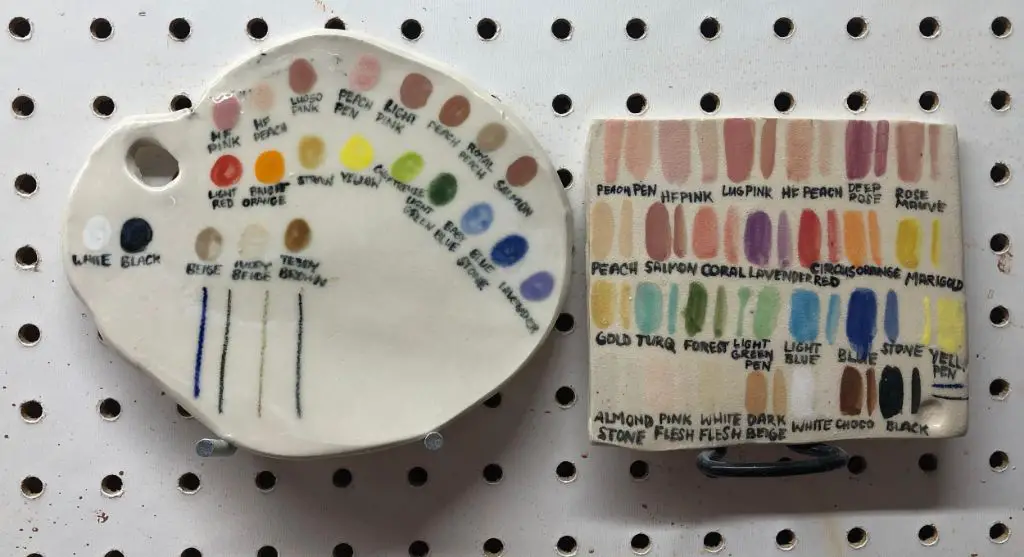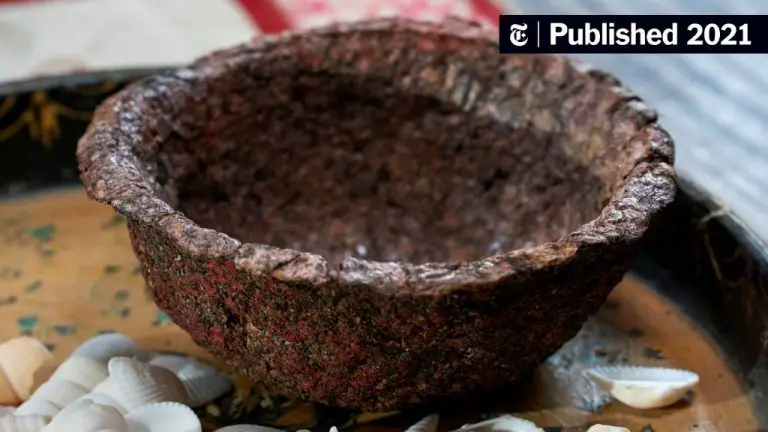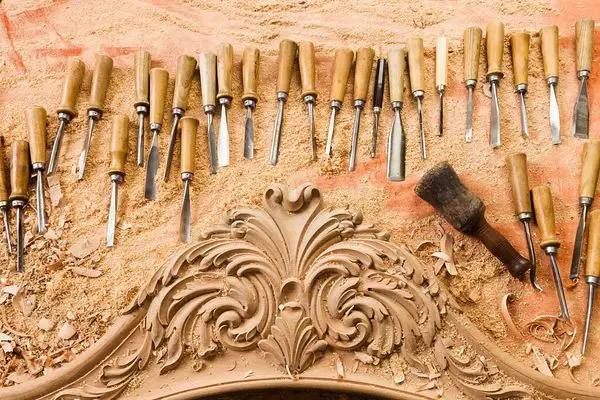What Is An Alternative To Underglaze Pencils?
Underglaze pencils are a type of ceramic decoration used to add color and design to pottery and ceramics before they are fired in a kiln. Underglazes work by being applied to the surface of unfired clay, known as greenware, and then become permanent once the piece has been fired. Underglaze pencils allow artists to draw fine details and intricate patterns on their pottery pieces with pencil-like precision. The colors are vibrant and will not fade or run even after being fired at high temperatures in a kiln.
Underglaze pencils are popular among ceramicists and potters because they offer great control and versatility when decorating pottery. However, some artists may want to explore alternatives for various reasons. The pencil tips can wear down quickly with repeated use. The color options are more limited compared to other underglaze mediums. And the pencils do not work as well for filling in large areas or adding gradient effects. Artists may want to try underglaze crayons, pens, or powders to achieve different decorative looks and effects. Expanding beyond pencils allows more creativity and diversity when decorating clay pieces before firing.
Oil-Based Underglazes
Oil-based underglazes are a popular alternative to underglaze pencils for decorating bisqueware and greenware. According to a Reddit discussion, oil-based underglazes have a consistency similar to gouache paint, allowing for blending and smoothing (source). They can be purchased in many colors from ceramic suppliers like Amaco, Mayco, and Duncan.
Oil-based underglazes are applied to bisqueware or greenware using a brush, sponge, or other decorating tool. The colors are vibrant and can be layered to produce different hues and effects. Many potters appreciate oil-based underglazes for their versatility – they can be used to create fine details or bold brushstrokes.
Tips for working with oil-based underglazes include using soft bristle brushes, adding a bit of water to prevent dragging, and allowing layers to fully dry between coats. Once decorated, the piece needs to be fired to maturity for the glaze to become permanent. With proper application and firing, oil-based underglazes offer a brilliant alternative to underglaze pencils.
Water-Soluble Underglazes
Water-soluble underglazes are underglaze paints that are thinned with water. They can be applied with a brush or other tools to bisqueware ceramic pieces before firing and glazing. Water-soluble underglazes differ from traditional oil-based underglazes in a few key ways:
Pros of water-soluble underglazes compared to pencils and oil-based:
- Water-soluble underglazes are more fluid and can achieve flowing, watercolor-like effects compared to the waxy nature of pencils. They blend smoothly.
- The colors can be thinned and layered to create translucent effects that allow the clay color to show through.
- Water-soluble underglazes cover large areas faster with a brush compared to the control but slower application of pencils.
Cons compared to pencils and oil-based:
- Less control over fine details and outlines compared to the precision of pencils.
- Colors are not as opaque and vibrant as oil-based underglazes.
- Require more preparation with water to get the right consistency before applying.
Overall, water-soluble underglazes offer a nice balance between the flowing control of paints and the opaque coverage of oil-based underglazes. They allow translucent watercolor effects perfect for blending, washes, and covering large areas with custom designs before firing. Popular brands of water-soluble underglazes include Amaco’s Semi-Moist Underglaze.

Underglaze Crayons
Underglaze crayons provide an alternative to underglaze pencils for decorating ceramic surfaces. Like underglaze pencils, underglaze crayons can be used to draw fine details or color larger areas on bisqueware or greenware before firing.
Underglaze crayons are available in a wide range of vibrant colors from manufacturers like AMACO and Mayco. They can be purchased individually or in sets. Some popular options include:
- AMACO Underglaze Crayon Set – Set of 12 brilliant underglaze crayon colors
- Mayco Stroke & Coat Underglaze Crayons – Softer formulation for smooth coloring
- Chroma Crayons – Offer intense underglaze colors with a creamy texture
Underglaze crayons allow both bold coloring effects as well as detailed drawing. Their softer texture makes blending and gradient effects easier to achieve compared to the harder leads of underglaze pencils. The colors also layer well for mixing custom hues.
Many ceramic artists appreciate underglaze crayons for adding color while keeping a “painterly” look. They provide excellent control for coloring inside fine line drawings. Underglaze crayons can also be sharpened to a fine point for detail work.
Overall, underglaze crayons give artists vibrant options for coloring ceramic work while maintaining the drawing precision of underglaze pencils. They offer a versatile alternative for those seeking to add both color and intricate details to their pottery.
Underglaze Pens
Underglaze pens and markers allow for finer details than traditional underglaze pencils. The liquid underglaze flows smoothly for precise lines and intricate designs. Popular brands include Marabu and Kato (https://ceramicartsnetwork.org/daily/article/Drawn-to-Surface-How-to-Make-and-Use-Underglaze-Pencils-Crayons-Pens-and-Trailers).
Underglaze pens come in a variety of tip sizes, from extra fine to broad, so artists can achieve different effects. The fine tips are great for delicate patterns, handwriting, and outlines. Broad tips work well for filling in large areas and bold strokes.
Underglaze pens must be stirred or shaken before each use to mix the underglaze pigments. Many brands offer replaceable nibs so artists can switch between tip sizes for different techniques. The underglaze flows evenly and dries quickly on the ceramic surface.
Compared to pencils, underglaze pens allow for more fluid, expressive marks. The liquid medium lends itself to calligraphy, brushwork styles, and blending colors. Pens give artists the control of a pencil but with a painterly feel.
Overall, underglaze pens are an excellent choice for detail work requiring precision, fluidity, and versatility. The array of nib options empowers artists to customize their tools for each ceramic project.
Airbrush Underglazes
Airbrush systems can be a great alternative to using underglaze pencils for applying decorative color to pottery. Airbrushes work by propelling underglaze paint through a fine mist to evenly coat surfaces [1]. The airbrush gun is attached to an air compressor or canister which provides the air pressure to atomize the paint.
There are several advantages to using an airbrush with underglazes. Airbrushing allows you to achieve smooth gradients and blend colors seamlessly. It gives you more control over the opacity of the underglaze compared to a brush. Airbrushes are also excellent for covering large surface areas evenly. The fine mist prevents brush strokes from showing up. With the right nozzle and pressure settings, airbrushes can create very fine detail work as well.
Airbrush systems do require an initial investment and learning curve to master the technique. But the possibilities are endless for creative effects with underglazes. From subtle shading to bold patterns, airbrushing gives potters much more versatility [2].
Underglaze Powders
Underglaze powders are concentrated pigments that can be mixed into mediums to create custom underglaze paints. Some popular options for underglaze powder include:
Speedball Art Products makes a variety of underglaze powders that can be mixed into their Underglaze Mixing Medium to achieve any color. Speedball powders are finely ground for smooth application.
Amaco Velvet Underglazes offer over 80 colors of underglaze powder that mix with water or their Underglaze Mixing Medium. The velvety texture makes them ideal for painting fine details.
Duncan Enterprises also manufactures their own line of underglaze powders that can be blended into Duncan Underglaze Mixing Medium.
Underglaze powders allow ceramic artists to easily mix any custom color needed for their project. The powders blend smoothly and fire permanantly under transparent glazes.
Underglaze Rubbing Plates
One alternative to using underglaze pencils directly on pottery is to use underglaze rubbing plates. Underglaze rubbing plates are relief designs created on bisqueware, glazed, and fired. The plates can then be used to transfer designs onto greenware or bisque by rubbing underglaze over the surface of the plate. The underglaze sticks to the raised areas of the design and transfers onto the pottery surface when rubbed against it. Using rubbing plates allows for consistent, repeatable patterns and designs to be achieved.1
Rubbing plates provide a way to add detailed, custom patterns and imagery to pottery without needing to hand paint each piece. The plates can be carved, molded, or stamped to create different relief textures and images to transfer. Plates can also be layered on top of each other with different underglaze colors to build up intricate multi-color designs. Overall, underglaze rubbing plates offer an alternative to direct application underglaze pencils and a means for efficient, reproducible surface decoration.
Masking Methods
Instead of drawing directly on the ceramic piece with underglaze pencils, some artists use masking techniques to selectively block out areas before painting. One common masking material is frisket film, a thin plastic sheet that can be cut into shapes and applied to the ceramic surface. The frisket blocks out areas, keeping them free of underglazes when painting the exposed sections.
Frisket film is an effective alternative to drawing fine lines and details with underglaze pencils. It allows for crisp, defined edges compared to freehand pencil work. However, working with frisket can be tedious and time consuming. Each shape must be carefully cut out and properly sealed down to prevent bleeding.
Other temporary masking options include wax-based resists, masking tape, latex masking fluid, and removable adhesive sheets. Each material has pros and cons in ease of use, masking ability, and cleanup. Test different products to find one suited to your artistic needs and style.
Conclusion
When considering alternatives to underglaze pencils, there are several options to choose from based on your artistic needs and preferences. Underglaze crayons provide intense, vibrant colors in a convenient wax-based format. Underglaze pens allow for great control and detail in line work. Airbrush underglazes are perfect for covering large areas evenly. Underglaze powders mixed with water or medium can be painted or splattered on. Underglaze rubbing plates transfer customizable patterns. Water-soluble underglazes and oil-based underglazes are both versatile painting options. The key factors in choosing between underglaze alternatives are the desired application method, color intensity, workability properties, and firing result. Testing different options on test tiles is recommended to determine which underglaze types best suit your artistic vision on a given project.


